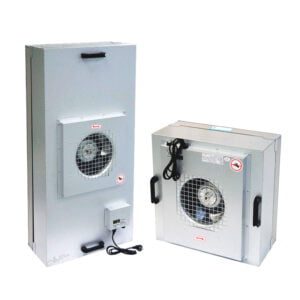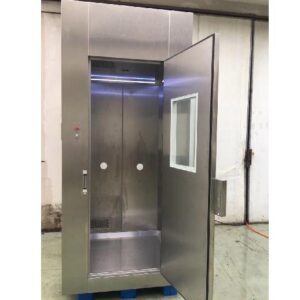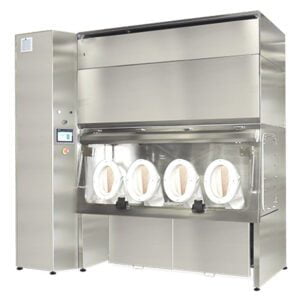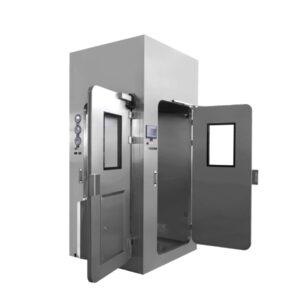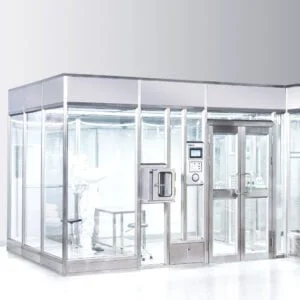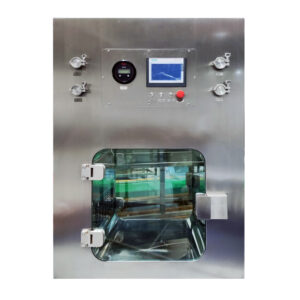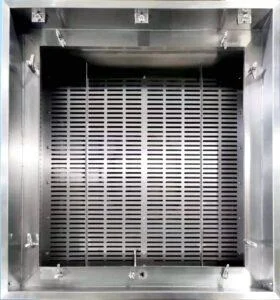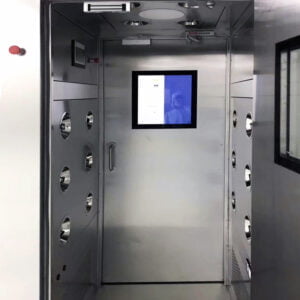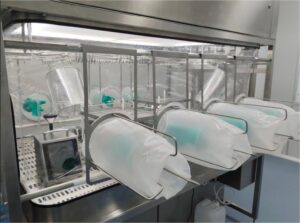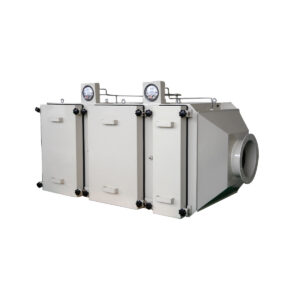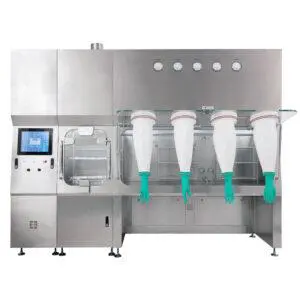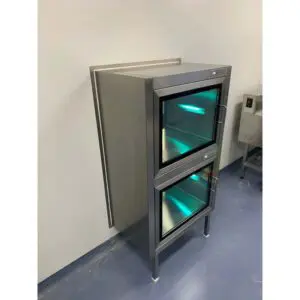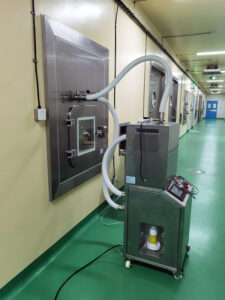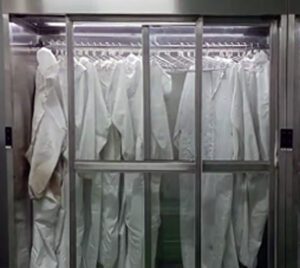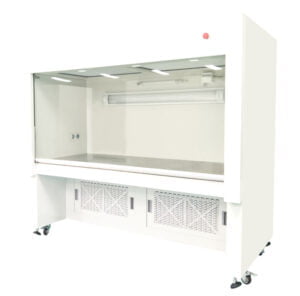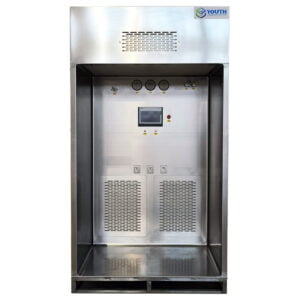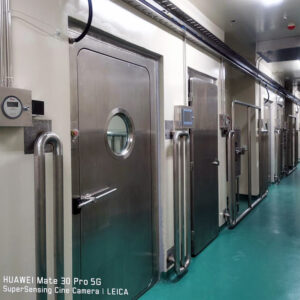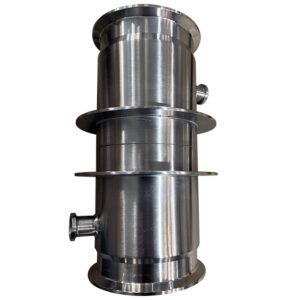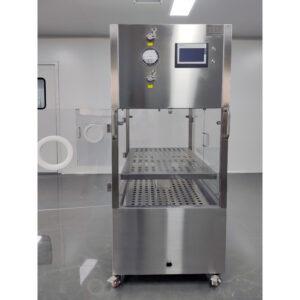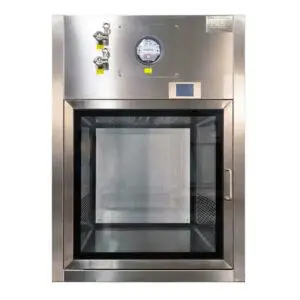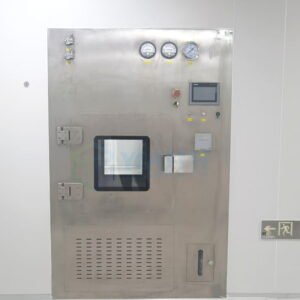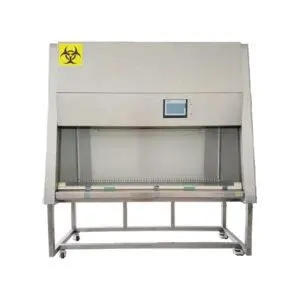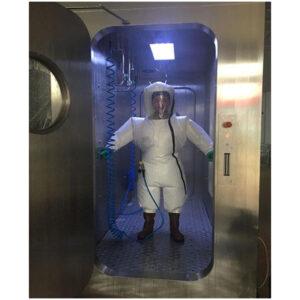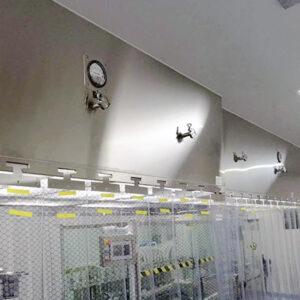Sterility test isolators play a critical role in ensuring the safety and efficacy of pharmaceutical products, medical devices, and biotechnology applications. As the industry continues to evolve, the importance of compliance with 21 CFR Part 11 has become increasingly significant. This regulation, established by the U.S. Food and Drug Administration (FDA), sets forth the criteria for electronic records and electronic signatures to be considered trustworthy, reliable, and equivalent to paper records.
In the realm of sterility testing, where maintaining aseptic conditions is paramount, the integration of 21 CFR Part 11 compliant systems is essential. These systems not only enhance the integrity of data but also streamline processes, reduce human error, and provide a robust audit trail. As we delve into the intricacies of 21 CFR Part 11 compliance for sterility test isolators, we'll explore the key requirements, challenges, and best practices that industry professionals need to consider.
From validating computer systems to implementing electronic signatures, the journey to compliance involves multiple facets that demand attention to detail and a thorough understanding of regulatory expectations. This article aims to provide a comprehensive guide for manufacturers, quality assurance professionals, and regulatory affairs specialists who are navigating the complex landscape of 21 CFR Part 11 compliance in the context of sterility test isolators.
"21 CFR Part 11 compliance is not just a regulatory requirement; it's a commitment to data integrity and patient safety in the pharmaceutical and medical device industries."
As we embark on this exploration, we'll uncover the essential components of a compliant system, discuss the impact on sterility testing procedures, and highlight the benefits of embracing these regulations. Let's dive into the world of 21 CFR Part 11 and discover how it shapes the future of sterility testing in controlled environments.
What are the key components of 21 CFR Part 11 compliance for sterility test isolators?
The foundation of 21 CFR Part 11 compliance for sterility test isolators rests on several critical components that ensure the integrity, security, and traceability of electronic records and signatures. These elements are designed to maintain the highest standards of data management in pharmaceutical and medical device manufacturing environments.
At its core, 21 CFR Part 11 compliance requires a robust system validation process, secure user authentication mechanisms, and comprehensive audit trails. For sterility test isolators, this translates into a need for sophisticated software systems that can handle the complexities of aseptic processing while meeting regulatory requirements.
One of the primary aspects of compliance is the implementation of closed systems that protect against unauthorized access and ensure data integrity. This is particularly crucial in sterility testing, where any compromise in the aseptic environment could lead to false results and potentially unsafe products reaching consumers.
"A closed system for sterility test isolators must incorporate stringent access controls, encrypted data transmission, and tamper-evident records to meet 21 CFR Part 11 standards."
When it comes to sterility test isolators, the following table outlines key components essential for 21 CFR Part 11 compliance:
| Component | Description | Importance |
|---|---|---|
| System Validation | Documented evidence of system reliability | Ensures accuracy and consistency |
| Audit Trails | Chronological record of system activities | Provides traceability and accountability |
| Electronic Signatures | Legally binding equivalent to handwritten signatures | Authenticates user actions and approvals |
| Access Controls | Mechanisms to limit system access to authorized individuals | Prevents unauthorized data manipulation |
| Data Backup | Regular and secure data backup procedures | Safeguards against data loss |
Implementing these components requires a comprehensive approach that integrates hardware, software, and procedural controls. YOUTH recognizes the importance of these elements and has developed solutions that address each aspect of compliance, ensuring that sterility test isolators meet the rigorous standards set by 21 CFR Part 11.
By focusing on these key components, manufacturers can create a compliant environment that not only satisfies regulatory requirements but also enhances the overall quality and reliability of their sterility testing processes. This proactive approach to compliance sets the stage for improved product safety and increased confidence in the integrity of test results.
How does system validation contribute to 21 CFR Part 11 compliance?
System validation is a cornerstone of 21 CFR Part 11 compliance, particularly when it comes to sterility test isolators. This process ensures that the computer systems and software used in conjunction with these isolators consistently produce accurate, reliable, and traceable results. Validation provides documented evidence that a system does exactly what it is designed to do, consistently and reproducibly.
For sterility test isolators, system validation encompasses a wide range of activities, from initial installation qualification (IQ) to operational qualification (OQ) and performance qualification (PQ). These steps verify that the isolator and its associated control systems are installed correctly, operate as intended, and perform consistently under actual working conditions.
The validation process is not a one-time event but an ongoing commitment to maintaining system integrity. It involves regular reviews, updates, and re-validation when significant changes occur. This continuous approach ensures that the sterility test isolator remains compliant with 21 CFR Part 11 throughout its lifecycle.
"A thoroughly validated system is the bedrock of 21 CFR Part 11 compliance, providing assurance that electronic records generated by sterility test isolators are trustworthy and equivalent to their paper counterparts."
To illustrate the importance of system validation, consider the following table outlining key validation activities for sterility test isolators:
| Validation Phase | Activities | Compliance Impact |
|---|---|---|
| Installation Qualification (IQ) | Verify hardware and software installation | Ensures proper system setup |
| Operational Qualification (OQ) | Test system functions and controls | Confirms system operates as designed |
| Performance Qualification (PQ) | Evaluate system performance in actual use | Demonstrates reliability in real conditions |
| Change Control | Manage and document system changes | Maintains ongoing compliance |
| Periodic Review | Assess system performance over time | Identifies need for re-validation |
By rigorously following these validation steps, manufacturers can demonstrate to regulatory bodies that their sterility test isolators are capable of consistently producing valid and reliable results. This level of assurance is crucial when dealing with the critical nature of sterility testing in pharmaceutical and medical device production.
The 21 CFR Part 11 compliance features integrated into modern sterility test isolators often include pre-validated software components, which can significantly streamline the validation process. However, it's important to note that while these features provide a solid foundation, each installation must still undergo site-specific validation to ensure compliance within the unique operating environment.
Ultimately, system validation not only satisfies regulatory requirements but also contributes to the overall quality and efficiency of sterility testing processes. By investing in thorough validation procedures, companies can enhance their data integrity, reduce the risk of product contamination, and build confidence in their sterility assurance programs.
What role do audit trails play in ensuring compliance with 21 CFR Part 11?
Audit trails are a critical component of 21 CFR Part 11 compliance, serving as the digital footprint that documents all activities within a sterility test isolator system. These chronological records provide a detailed account of who did what, when, and why, creating a transparent and traceable history of all operations and data modifications.
For sterility test isolators, audit trails capture a wide range of events, from user logins and logouts to changes in test parameters, results entry, and approval processes. This comprehensive logging ensures that every action that could potentially affect the integrity of sterility test data is recorded and can be reviewed.
The importance of audit trails cannot be overstated in the context of regulatory compliance. They not only satisfy the requirements of 21 CFR Part 11 but also provide a powerful tool for quality assurance and troubleshooting. In the event of an unexpected result or a question about the validity of a sterility test, audit trails allow for a thorough investigation of the circumstances surrounding the event.
"Robust audit trails in sterility test isolators act as a safeguard against data manipulation and provide an unalterable record of all system interactions, reinforcing the integrity of test results."
To better understand the scope of audit trails in sterility testing, consider the following table outlining key elements typically captured:
| Audit Trail Element | Description | Compliance Significance |
|---|---|---|
| User Actions | Login/logout, data entry, approvals | Tracks individual accountability |
| System Events | Software updates, calibrations | Documents system maintenance |
| Data Changes | Modifications to test parameters or results | Ensures data integrity |
| Time Stamps | Date and time of all recorded events | Provides chronological context |
| Reason for Change | Justification for data modifications | Explains the rationale behind changes |
Implementing a compliant audit trail system requires careful consideration of several factors. The audit trail must be secure, with no ability for users to modify or delete entries. It should be easily accessible for review by authorized personnel and regulatory inspectors. Additionally, the system should be capable of generating clear, comprehensive reports that can be used for periodic reviews and inspections.
Modern sterility test isolators often come equipped with sophisticated audit trail capabilities that integrate seamlessly with other 21 CFR Part 11 compliance features. These systems typically offer configurable settings to capture the level of detail required by specific organizational policies and regulatory expectations.
The value of well-implemented audit trails extends beyond mere compliance. They serve as a powerful tool for continuous process improvement, allowing organizations to identify trends, detect anomalies, and implement corrective actions proactively. By leveraging the insights provided by audit trails, companies can enhance the efficiency and reliability of their sterility testing processes.
In conclusion, audit trails are an indispensable element of 21 CFR Part 11 compliance for sterility test isolators. They provide the necessary documentation to demonstrate the integrity and traceability of electronic records, instilling confidence in the validity of sterility test results and supporting the overall quality assurance efforts of pharmaceutical and medical device manufacturers.
How do electronic signatures fulfill 21 CFR Part 11 requirements in sterility testing?
Electronic signatures are a cornerstone of 21 CFR Part 11 compliance, providing a legally binding equivalent to traditional handwritten signatures. In the context of sterility test isolators, electronic signatures play a crucial role in authenticating user actions, approving test results, and validating critical processes. They ensure that each significant step in the sterility testing workflow is properly authorized and documented.
The implementation of electronic signatures in sterility testing environments must meet specific criteria outlined in 21 CFR Part 11. These include the use of at least two distinct identification components, such as a username and password, and the ability to generate a clear, human-readable representation of the signed electronic record.
For sterility test isolators, electronic signatures are typically employed at various stages of the testing process. This may include the approval of test protocols, verification of environmental conditions, confirmation of test results, and authorization of final reports. Each signature event must be securely linked to the respective electronic record in a manner that prevents unauthorized copying or transfer.
"Electronic signatures in 21 CFR Part 11 compliant sterility test isolators not only streamline workflows but also enhance accountability and data integrity throughout the testing process."
To illustrate the application of electronic signatures in sterility testing, consider the following table:
| Signature Event | Purpose | Compliance Requirement |
|---|---|---|
| Test Setup Approval | Verify test parameters | Two-factor authentication |
| Environmental Check | Confirm aseptic conditions | Non-biometric identifiers |
| Result Verification | Validate test outcomes | Signature manifestation |
| Report Authorization | Approve final documentation | Signature/record linking |
Implementing a compliant electronic signature system requires careful consideration of security measures and user management. Access to electronic signature functionality must be tightly controlled, with each user having a unique identifier that cannot be reassigned or reused. The system must also be capable of detecting and preventing attempts at falsification or unauthorized use of electronic signatures.
Modern sterility test isolators often incorporate advanced electronic signature capabilities that are designed to meet 21 CFR Part 11 requirements. These systems typically feature configurable workflows that enforce proper signature sequencing and ensure that all required approvals are obtained before proceeding to subsequent steps in the testing process.
One of the key advantages of electronic signatures in sterility testing is the ability to streamline review and approval processes. Unlike paper-based systems, which may require physical presence for signatures, electronic systems allow authorized individuals to review and sign documents remotely, potentially reducing delays in the release of test results.
It's important to note that the use of electronic signatures must be accompanied by appropriate training and procedural controls. Organizations must establish clear policies regarding the use of electronic signatures, including procedures for issuing, revoking, and managing signature credentials. These policies should be reinforced through regular training to ensure that all users understand their responsibilities when applying electronic signatures.
The integration of electronic signatures into sterility test isolator systems not only satisfies regulatory requirements but also contributes to overall operational efficiency. By reducing reliance on paper-based processes, organizations can minimize transcription errors, improve traceability, and accelerate the review and release of sterility test results.
In conclusion, electronic signatures are an essential component of 21 CFR Part 11 compliance for sterility test isolators. When properly implemented, they provide a secure, efficient, and legally binding method for authenticating critical actions in the sterility testing workflow. As technology continues to evolve, electronic signatures will likely play an increasingly important role in ensuring the integrity and reliability of sterility testing processes in regulated industries.
What security measures are necessary to maintain 21 CFR Part 11 compliance in sterility test isolators?
Security is paramount when it comes to maintaining 21 CFR Part 11 compliance in sterility test isolators. The sensitive nature of sterility testing and the critical importance of data integrity demand a multi-layered approach to security that encompasses both physical and digital safeguards. These measures are designed to protect against unauthorized access, data tampering, and potential breaches that could compromise the validity of sterility test results.
At the core of 21 CFR Part 11 compliance is the concept of a closed system, which limits access to authorized individuals. For sterility test isolators, this means implementing robust access controls that govern not only who can physically operate the isolator but also who can interact with the associated software and data management systems.
User authentication is a critical component of these security measures. Compliant systems typically require unique user identifications coupled with complex passwords or other advanced authentication methods such as biometrics or smart cards. These mechanisms ensure that only authorized personnel can access the system and perform specific functions based on their assigned roles and responsibilities.
"A comprehensive security strategy for 21 CFR Part 11 compliant sterility test isolators must address both physical access to the equipment and logical access to electronic records and system functions."
To better understand the range of security measures required, consider the following table outlining key security components:
| Security Measure | Description | Compliance Impact |
|---|---|---|
| Access Controls | User authentication and authorization | Prevents unauthorized system use |
| Data Encryption | Protection of data at rest and in transit | Ensures confidentiality of records |
| Audit Trails | Detailed logging of all system activities | Provides accountability and traceability |
| Backup and Recovery | Regular data backups and disaster recovery plans | Safeguards against data loss |
| Physical Security | Restricted access to isolator and associated hardware | Protects against tampering |
Implementing these security measures requires a holistic approach that considers the entire sterility testing workflow. This includes securing the network infrastructure, implementing firewalls and intrusion detection systems, and ensuring that all software components are regularly updated and patched to address any identified vulnerabilities.
For sterility test isolators, physical security is just as important as digital security. Access to the isolators themselves should be restricted to authorized personnel, with measures in place to prevent unauthorized entry into the clean room or testing area. This may include the use of access cards, biometric scanners, or other controlled entry systems.
Data integrity is another critical aspect of security in 21 CFR Part 11 compliant systems. This involves not only protecting data from unauthorized changes but also ensuring that all data is attributable, legible, contemporaneous, original, and accurate (ALCOA principles). Sterility test isolator systems must incorporate features that maintain the integrity of data throughout its lifecycle, from initial capture to long-term archival.
Modern sterility test isolators often come equipped with advanced security features designed to meet 21 CFR Part 11 requirements. These may include role-based access controls, encrypted data storage and transmission, and automated system activity logging. However, it's important to note that the effectiveness of these features depends on proper configuration and ongoing management.
Regular security assessments and audits are essential to maintaining compliance over time. These reviews help identify potential vulnerabilities and ensure that security measures remain effective in the face of evolving threats and changing regulatory expectations.
Training plays a crucial role in maintaining security and compliance. All personnel involved in sterility testing should receive comprehensive training on security procedures, the proper use of electronic signatures, and the importance of maintaining data integrity. This training should be documented and refreshed periodically to ensure ongoing compliance.
In conclusion, maintaining 21 CFR Part 11 compliance in sterility test isolators requires a comprehensive and layered approach to security. By implementing robust access controls, data protection measures, and ongoing monitoring and training, organizations can create a secure environment that meets regulatory requirements and instills confidence in the integrity of their sterility testing processes. As technology continues to advance, it's crucial for manufacturers to stay informed about emerging security best practices and to adapt their systems accordingly to maintain compliance and protect the validity of their sterility test results.
How does data management support 21 CFR Part 11 compliance in sterility testing?
Effective data management is a cornerstone of 21 CFR Part 11 compliance in sterility testing. It encompasses the entire lifecycle of data, from initial collection through analysis, storage, and eventual archival or disposal. In the context of sterility test isolators, robust data management practices ensure the integrity, accuracy, and availability of critical test results and supporting information.
The primary goal of data management in compliance with 21 CFR Part 11 is to maintain electronic records that are trustworthy, reliable, and equivalent to paper records. This requires a systematic approach that addresses data capture, processing, retention, and retrieval in a manner that is both secure and traceable.
For sterility test isolators, data management systems must be capable of handling various types of information, including environmental parameters, test protocols, raw data from analytical instruments, and final test reports. These systems should provide a seamless integration between the isolator's control systems and the broader laboratory information management system (LIMS) or quality management system (QMS) used by the organization.
"Comprehensive data management in 21 CFR Part 11 compliant sterility test isolators not only ensures regulatory compliance but also facilitates data-driven decision-making and continuous process improvement."
To illustrate the key aspects of data management in sterility testing, consider the following table:
| Data Management Aspect | Description | Compliance Significance |
|---|---|---|
| Data Capture | Automated collection of test parameters and results | Reduces human error and ensures data accuracy |
| Data Validation | Real-time checks for data completeness and consistency | Maintains data integrity from the point of entry |
| Data Storage | Secure, redundant storage of all electronic records | Protects against data loss and unauthorized access |
| Data Retrieval | Efficient search and reporting capabilities | Facilitates audits and regulatory inspections |
| Data Archival | Long-term preservation of electronic records | Meets retention requirements and supports historical analysis |
Implementing a compliant data management system for sterility test isolators requires careful consideration of several factors. The system must be validated to ensure it consistently performs as intended, with appropriate controls in place to prevent unauthorized changes to data. It should also include features for version control, allowing for the tracking of any modifications to electronic records over time.
One of the key challenges in data management for sterility testing is ensuring the integrity of data throughout its lifecycle. This includes protecting against data manipulation, whether intentional or accidental. Compliant systems typically employ techniques such as checksums, digital signatures, or blockchain technology to verify the authenticity and integrity of stored data.
Data backup and recovery procedures are critical components of a robust data management strategy. Regular backups should be performed and stored securely, with documented procedures for data restoration in the event of system failures or other emergencies. These procedures should be tested periodically to ensure their effectiveness.
Modern sterility test isolators often incorporate advanced data management capabilities that are designed to meet 21 CFR Part 11 requirements. These may include automated data transfer from isolator control systems to centralized databases, real-time data visualization tools, and integrated reporting functions that streamline the generation of compliant test reports.
The value of effective data management extends beyond mere compliance. By implementing comprehensive data management practices, organizations can gain deeper insights into their sterility testing processes, identify trends, and make data-driven decisions to improve efficiency and quality. This proactive approach to data management can lead to reduced testing times, improved product quality, and ultimately, enhanced patient safety.
It's important to note that data management in 21 CFR Part 11 compliant environments requires ongoing attention and resources. Organizations must establish clear policies and procedures for data handling, conduct regular training for personnel, and perform periodic audits to ensure continued compliance and effectiveness of their data management practices.
In conclusion, effective data management is essential for maintaining 21 CFR Part 11 compliance in sterility test isolators. By implementing robust systems for data capture, validation, storage, and retrieval, organizations can ensure the integrity and traceability of their sterility testing data. This not only satisfies regulatory requirements but also provides a solid foundation for continuous improvement and innovation in sterility testing processes.
What are the challenges in implementing 21 CFR Part 11 compliance for sterility test isolators?
Implementing 21 CFR Part 11 compliance for sterility test isolators presents several challenges that organizations must navigate carefully. These challenges stem from the complex nature of sterility testing, the stringent requirements of the regulation, and the need to balance compliance with operational efficiency.
One of the primary challenges is the integration of compliant systems with existing laboratory workflows. Sterility testing often involves multiple steps and equipment, and ensuring that all electronic records and signatures are captured and managed in accordance with 21 CFR Part 11 can be complex. This may require significant changes to established procedures and potentially the replacement or upgrade of legacy systems that are not compliant.
Another significant challenge is the validation of computer systems associated with sterility test isolators. The validation process can be time-consuming and resource-intensive, requiring thorough documentation and testing to demonstrate that systems consistently perform as intended. This is particularly challenging in environments where software updates or system changes are frequent, as each change may necessitate re-validation.
"The implementation of 21 CFR Part 11 compliance for sterility test isolators demands a delicate balance between regulatory adherence and operational practicality, often requiring organizations to rethink their entire approach to data management and quality assurance."
To better understand the range of challenges, consider the following table outlining common issues and their potential impacts:
| Challenge | Description | Potential Impact |
|---|---|---|
| System Integration | Incorporating compliant systems into existing workflows | Disruption to operations, increased complexity |
| Validation Burden | Extensive testing and documentation requirements | Resource drain, potential delays in implementation |
| User Adoption | Training personnel on new systems and procedures | Resistance to change, initial decrease in productivity |
| Cost of Compliance | Investment in compliant hardware, software, and training | Budget strain, potential impact on other initiatives |
| Ongoing Maintenance | Continuous system updates and re-validation | Increased operational overhead, compliance risk |
One of the more nuanced challenges is striking the right balance between security and usability. While 21 CFR Part 11 requires robust security measures, overly cumbersome authentication processes or restrictive access controls can hinder productivity and potentially lead to workarounds that compromise compliance. Designing systems that are both secure and user-friendly requires careful consideration and often involves trade-offs.
Data integrity is another area that poses significant challenges. Ensuring that all electronic records are attributable, legible, contemporaneous, original, and accurate (ALCOA principles) throughout their lifecycle requires sophisticated data management systems and rigorous procedures. This can be particularly challenging in environments where multiple users interact with data across different stages of the sterility testing process.
The evolving nature of technology and regulatory expectations adds another layer of complexity. As new technologies emerge and regulatory guidance is updated, organizations must continually assess and potentially modify their compliance strategies. This requires staying informed about industry trends and maintaining flexibility in system design and implementation.
For many organizations, the cost of implementing and maintaining 21 CFR Part 11 compliant systems for sterility test isolators can be substantial. This includes not only the initial investment in compliant hardware and software but also ongoing costs associated with training, validation, and system maintenance. Justifying these costs and demonstrating return on investment can be challenging, particularly for smaller organizations or those with limited resources.
Another challenge lies in managing the human element of compliance. Ensuring that all personnel understand and consistently follow compliant procedures requires ongoing training and cultural change. This can be particularly challenging in organizations with high turnover or those that rely heavily on temporary or contract workers.
Despite these challenges, many organizations have successfully implemented 21 CFR Part 11 compliant systems for their sterility test isolators. Success often hinges on taking a holistic approach that considers not just the technical requirements of compliance but also the operational and cultural aspects of the organization.
In conclusion, while implementing 21 CFR Part 11 compliance for sterility test isolators presents significant challenges, these are not insurmountable. By carefully planning, allocating sufficient resources, and fostering a culture of compliance, organizations can overcome these obstacles and reap the benefits of improved data integrity, enhanced quality assurance, and streamlined regulatory compliance. The key lies in viewing compliance not as a burden but as an opportunity to improve processes and ultimately ensure the safety and efficacy of the products being tested.
In conclusion, 21 CFR Part 11 compliance for sterility test isolators is a multifaceted endeavor that touches on various aspects of pharmaceutical and medical device manufacturing. From system validation and audit trails to electronic signatures and robust data management, each component plays a crucial role in ensuring the integrity, security, and traceability of electronic records and signatures.
The implementation of compliant systems not only satisfies regulatory requirements but also offers significant benefits in terms of operational efficiency, data accuracy, and quality assurance. By embracing the principles of 21 CFR Part 11, organizations can create a more reliable and transparent sterility testing process, ultimately contributing to improved product safety and patient well-being.
As we've explored throughout this article, the journey to compliance involves overcoming various challenges, from technical integration issues to cultural adoption hurdles. However, with careful planning, ongoing training, and a commitment to continuous improvement, these challenges can be successfully navigated.
The future of sterility testing lies in the seamless integration of advanced technologies with regulatory compliance. As isolator systems become more sophisticated, incorporating features like artificial intelligence and machine learning, the importance of maintaining 21 CFR Part 11 compliance will only grow. Organizations that invest in robust, compliant systems today will be well-positioned to adapt to future regulatory changes and technological advancements.
Ultimately, 21 CFR Part 11 compliance for sterility test isolators is not just about meeting regulatory standards—it's about fostering a culture of quality and integrity that permeates every aspect of the sterility testing process. By prioritizing compliance and embracing best practices in electronic record-keeping and data management, companies can ensure the ongoing safety and efficacy of their products, building trust with regulators, healthcare providers, and patients alike.
As the industry continues to evolve, staying informed about regulatory updates and technological innovations will be crucial. Organizations should view compliance as an ongoing process, continuously evaluating and improving their systems to meet the highest standards of data integrity and security. By doing so, they can not only meet the requirements of 21 CFR Part 11 but also set new benchmarks for excellence in sterility testing and quality assurance.
External Resources
21 CFR Pt. 11 Compliance with Electronic Signatures – Docusign – This article explains who needs to comply with 21 CFR Part 11, including pharmaceutical, biotechnology, and medical device companies, and outlines the requirements for electronic records and signatures.
Guidance on FDA 21 CFR Part 11 Compliance | Northwell Health – This document provides detailed guidance on the general requirements for 21 CFR Part 11 compliance, including system validation, secure audit trails, and the generation of accurate and complete record copies.
What is FDA 21 CFR Part 11 compliance and why it matters – NanoTemper Technologies – This blog post discusses the importance of 21 CFR Part 11 compliance, highlighting security features, audit trails, and electronic signatures, and explains how these regulations impact researchers in regulated environments.
21 CFR Part 11 Electronic Records; Electronic Signatures – FDA – The official FDA page on 21 CFR Part 11, detailing the regulatory requirements and guidelines for electronic records and electronic signatures in FDA-regulated industries.
21 CFR Part 11 Compliance for Life Sciences – LabVantage – This article focuses on how life sciences organizations can ensure compliance with 21 CFR Part 11, including the use of compliant laboratory information management systems (LIMS).
21 CFR Part 11: Compliance Requirements for Electronic Records and Signatures – Pharmaceutical Technology – This resource typically discusses the compliance requirements in the context of pharmaceutical and biotech industries, emphasizing the importance of validation, security, and audit trails.
Related Contents:
- Medical Device Testing with Sterility Test Isolators
- cGMP Compliant Sterility Test Isolators: Key Features
- GAMP 5 Compliant Sterility Test Isolators: Best Practices
- Compact Sterility Test Isolators for Small Labs
- USP <797> Compliant Sterility Test Isolators: Essentials
- Sterility Test Isolators for Ophthalmic Products
- Custom Sterility Test Isolators: Top 5 Designs 2025
- PLC Control Systems for Sterility Test Isolators
- Environmental Monitoring in Sterility Test Isolators


